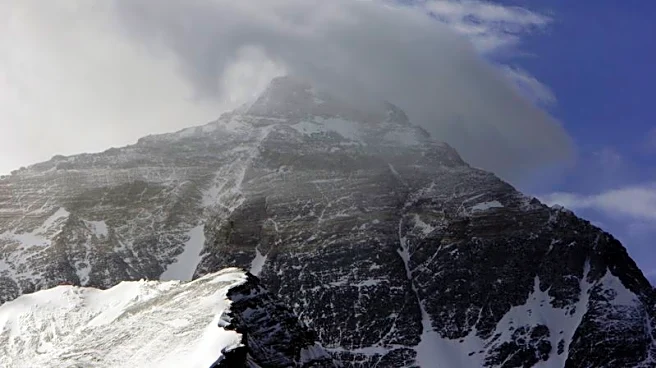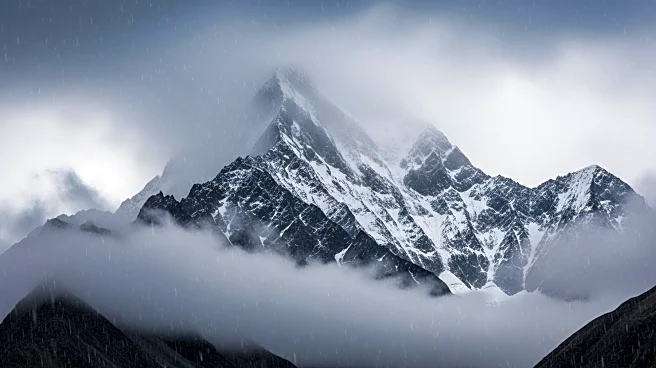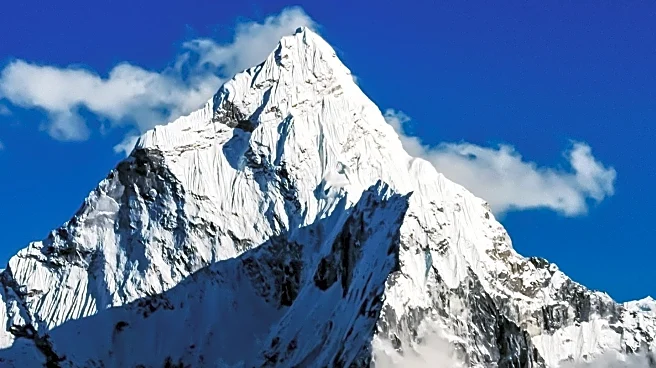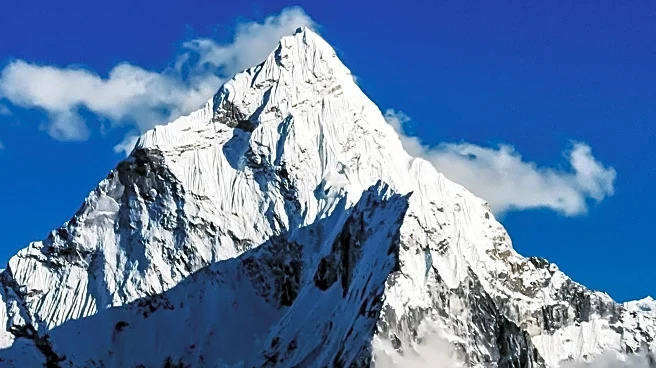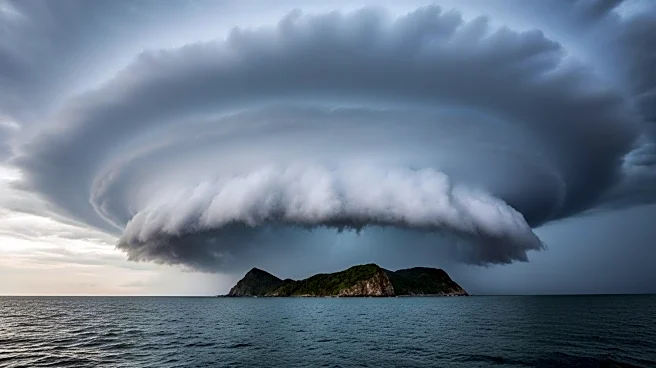What's Happening?
Hundreds of hikers have been trapped on Mount Everest due to a severe snowstorm, according to Chinese authorities. The storm led to the closure of the scenic area during a national holiday, which had attracted a large number of tourists. The local government of Shigatse, a city in Tibet that encompasses the Chinese side of Mount Everest, announced that rescue workers are in contact with the stranded individuals, ensuring they have adequate supplies. However, the exact number of people still on the mountain remains unspecified. China's central broadcaster reported that 350 people have safely reached a rescue point in Qudang, Tibet, while over 200 others are en route. Despite the ongoing rescue efforts, local tourism authorities have expressed uncertainty regarding the operation's status.
Why It's Important?
The situation highlights the challenges faced by rescue operations in remote and harsh environments like Mount Everest. The snowstorm has disrupted a national holiday, affecting tourism and potentially straining local resources. The incident underscores the importance of preparedness and coordination in managing emergencies in popular tourist destinations. The successful rescue of hundreds of hikers is crucial to maintaining safety and confidence in the region's tourism industry. Additionally, the event may prompt discussions on improving infrastructure and emergency response strategies in high-risk areas.
What's Next?
Rescue operations are expected to continue as authorities work to ensure the safety of all stranded hikers. The focus will likely remain on providing necessary supplies and facilitating safe passage to rescue points. Local governments may review and enhance their emergency preparedness plans to prevent similar incidents in the future. The tourism industry might also consider implementing stricter safety protocols during adverse weather conditions to protect visitors.
Beyond the Headlines
The incident may lead to broader discussions on the impact of climate change on weather patterns in mountainous regions, potentially increasing the frequency and severity of such storms. It also raises questions about the ethical responsibilities of tourism operators in ensuring visitor safety and the need for sustainable tourism practices that prioritize environmental and human safety.

